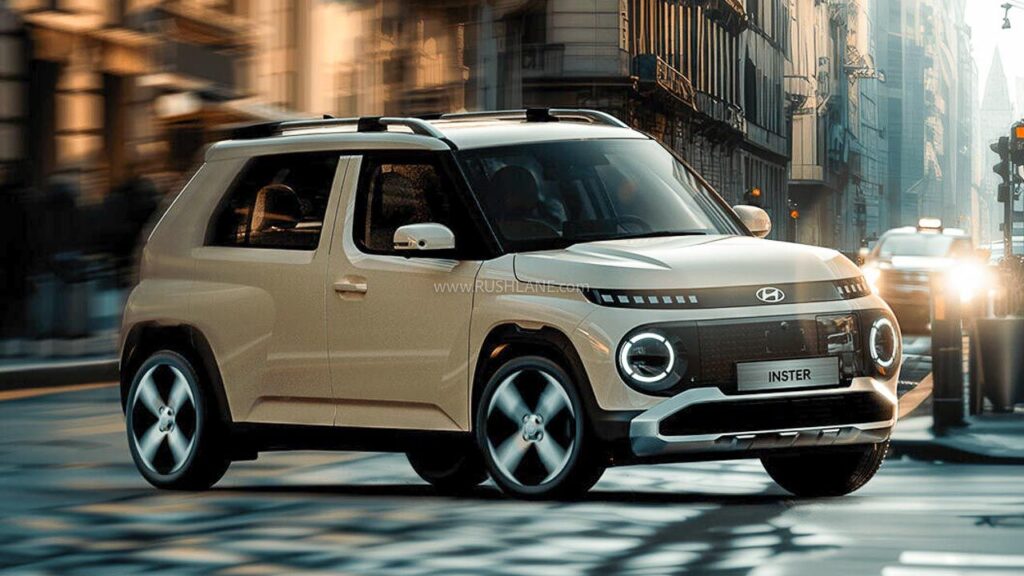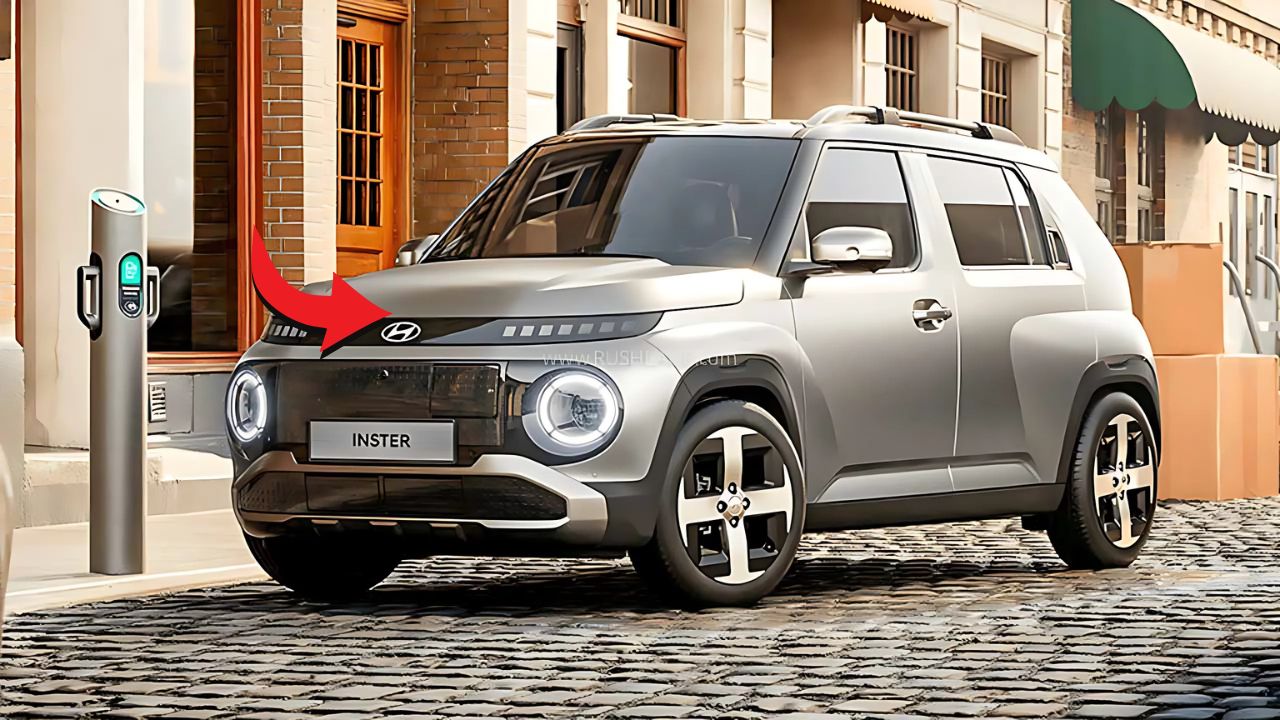The Australian electric vehicle market has been dominated by Chinese manufacturers for far too long, leaving many buyers yearning for a familiar brand they can trust. Enter the Hyundai Ister – a pint-sized electric SUV that’s about to shake up everything we thought we knew about affordable EVs down under.
After months of anticipation, the Hyundai Ister is now on sale in Australia with pricing starting from $39,000 plus on-road costs, making it one of the most compelling options in the budget electric vehicle segment. While it might not hit the exact $40,000 mark some were hoping for, it’s still significantly more affordable than Hyundai’s other electric offerings and represents a major shift in the Korean manufacturer’s strategy.

What Makes the Inster Special in Australia’s Crowded EV Market
Walking up to the Inster for the first time is quite an experience. The Inster has such a cutesy look and is absolutely tiny when you walk up to it, yet somehow manages to pack an incredible amount of character into its diminutive frame. At just 3,825mm long, it’s smaller than most cars you’ll see on Australian roads, but don’t let that fool you into thinking it’s compromised.
The design philosophy behind the Inster is refreshingly different from the soap-bar styling that seems to plague many modern EVs. The distinctive small EV style of the INSTER is highlighted through its circular LED headlamps, pixelated turn signals, and sleek lights. These aren’t just aesthetic choices – they’re statement pieces that announce to the world that you’re driving something genuinely different.
Powertrain Options That Actually Make Sense
Unlike some manufacturers who stuff massive batteries into small cars just to boast about range numbers, Hyundai has taken a pragmatic approach with the Inster. The Inster Standard Range comes with a 42kWh battery and a single e-motor that produces 71kW and 147Nm, while the Extended Range variant features a 49kWh battery with an 84.5kW motor.
The Standard Range variant can cover up to 327km on the WLTP test-cycle, with the long-range variant covering up to 360km on a single charge. These figures might not sound earth-shattering compared to some of the larger EVs on the market, but for a city car designed primarily for urban use, they’re more than adequate.
Performance figures are deliberately modest but perfectly suited to the vehicle’s intended purpose. The Standard Range’s 71.1kW/147Nm is capable of a 0-100km/h dash of 11.7 seconds and a 140km/h top speed, while the Extended Range’s punchier 84.5kW/147Nm sees the 0-100km/h dash fall to 10.6 seconds.
Interior Space That Defies Physics
Step inside the Inster and you’ll immediately understand why Hyundai’s engineers deserve recognition. While it is strictly a four-seater, a sliding second row that can liberate an impressive 958mm of legroom for the rear occupants means it is surprisingly practical. This isn’t just marketing speak – the space utilisation genuinely feels like magic when you experience it firsthand.
A Citroen Cactus-style ‘bench’ seat incorporates moulded cupholders and an arm rest and allows a ‘walk through’ style front cabin so you can shift across to the passenger side when parking spots are tight. It’s these kinds of thoughtful touches that elevate the Inster above simple transportation appliance status.
The boot space varies depending on configuration, offering up to 280 litres of space, although versions with sliding seats can boost that figure to 351 litres. While not massive, it’s perfectly adequate for weekly shopping trips or weekend getaways.
Technology That Actually Enhances the Driving Experience
The Inster’s tech offerings strike an excellent balance between functionality and showiness. The size of both displays ensures that all information is easily legible and the infotainment screen employs an app grid that’s easy to navigate. The twin 10.25-inch displays don’t feel gimmicky – they serve genuine purposes and integrate well with the overall cabin design.
INSTER features interactive pixel lights on the wheel, adding a futuristic feel that keeps you in the loop. Minimalistic and modern—they communicate key info like charging status, driving mode and more. These aren’t just pretty lights – they provide genuinely useful information at a glance.
The Cross Variant: Adventure-Ready Without the Pretence
For those wanting a bit more ruggedness without crossing into full SUV territory, the Inster Cross represents an interesting middle ground. The Inster Cross brings unique cladding and bumpers plus skid plates and roof racks, giving it a more outdoor-focused appearance while maintaining all the core virtues of the standard model.
The Cross also features the ability for all four seats to be folded flat, opening up camping and cargo possibilities that you wouldn’t expect from such a compact vehicle. The Inster Cross can be had with either a sunroof or a roof basket, with the vehicle’s price remaining the same – $45,000 before on-roads – either way.
Charging Capabilities for Real-World Use
One area where the Inster truly shines is in its charging capabilities. Hyundai says it takes 30 minutes to charge the Inster from 10 to 80 per cent using a 120kW DC fast-charger. This is genuinely useful for long-distance travel, making the Inster more versatile than many give it credit for.
The inclusion of V2L technology, the INSTER powers your lifestyle. Plug into the 240V internal outlet or use the external socket with a V2L adaptor, even when the car is off. This vehicle-to-load capability transforms the Inster from simple transportation into a mobile power station, perfect for camping trips, outdoor events, or emergency situations.
Safety and Driver Assistance Features
Despite its budget positioning, Hyundai hasn’t skimped on safety equipment. These include seven airbags (a front-centre airbag prevents head collisions) and well-tuned ADAS suite. The inclusion of a front-centre airbag is particularly noteworthy, as this feature is often reserved for more expensive vehicles.
As standard, there’s Highway Driving 1.5, which combines adaptive cruise control and lane centring. It’s pretty good for the most part and takes the fatigue out of driving long distances on the highway. While the system occasionally needs driver intervention in complex situations, it’s remarkably capable for a vehicle in this price range.
Driving Dynamics That Surprise and Delight
On the road, the Inster demonstrates that small doesn’t necessarily mean compromised. Handling is sure-footed and predictable, thanks to Hyundai Australia’s talented chassis engineers but corner-carving is not what this car is set up for. The engineers have clearly prioritised comfort and refinement over outright performance, and that’s exactly the right call for this type of vehicle.
Despite smaller than a BYD Dolphin (4290mm long) the little Inster has been built to offer ‘exemplary refinement’, say Hyundai engineers, with double seals for the doors, thicker front door glass, optimised aero and special bushings used for the electric motor mounts all used to slash noise and vibration entering the cabin.
Value Proposition in Context
When evaluating the Inster’s pricing, it’s important to consider what you’re getting for your money. The new Hyundai Inster is still significantly more expensive than Australia’s cheapest EV, the BYD Dolphin Essential that costs just $29,990 plus on-roads. However, the Inster offers something that many of the ultra-cheap Chinese EVs don’t: brand trust and local support infrastructure.
I have a weekly advice/comment column in some of Australia’s biggest newspapers, and receive regular letters from those who won’t consider Chinese vehicles. For these buyers, the Inster represents the first viable alternative in the sub-$40,000 EV space from a brand they trust.
Warranty and Ownership Costs
The Hyundai Inster is backed by Hyundai Australia’s five-year, unlimited-kilometre vehicle warranty plus an eight-year, 160,000km high-voltage battery warranty. This level of coverage provides genuine peace of mind and represents excellent value compared to some competitors.
The inclusion of a complimentary five-year Bluelink subscription adds even more value, providing connected services that would cost extra with many other manufacturers.
Colour Options That Reflect Your Personality
One area where the Inster truly excels is in allowing buyers to express their personality through colour choice. The Inster is available in nine colours, including ‘Urban Khaki’, ‘Natural Ivory’, ‘Buttercream Yellow’, ‘Sienna Orange’ and new matte ‘Dusk Blue’, ‘Aero Silver’ and ‘Amazonas Green’. These aren’t your typical conservative automotive colours – they’re vibrant, expressive options that celebrate the Inster’s unique character.
Real-World Efficiency Numbers
While official consumption figures are one thing, real-world efficiency tells the true story. Although Hyundai claims the Inster will average unremarkable energy consumption of 15.6kWh/100km, our tester returned an exceptional 11.2kWh/100km over 200km of mixed driving. These efficiency figures are genuinely impressive and suggest that real-world range could exceed official estimates.
The Competition and Market Positioning
The Inster enters a competitive market segment, facing off against established players like the MG ZS EV at $34,990; GWM Ora at $35,990, BYD Dolphin about $39,000 and MG4 about $40,000. While it’s not the cheapest option, the Inster offers something unique: a combination of brand credibility, thoughtful design, and genuine innovation.
In fact, we could see a bit of conquest from Fiat 500e and MINI Cooper SE customers, such is its joyfulness and mature execution. This suggests that the Inster’s appeal extends beyond purely price-conscious buyers to those seeking character and charm in their electric vehicle.
Future Prospects and Market Impact

The Inster’s arrival marks a significant moment for the Australian EV market. It’s about bloody time. Finally – belatedly – we have one of Australia’s top five car brands delivering a budget small EV. This validates the segment and should encourage other mainstream manufacturers to develop their own affordable electric offerings.
Recognised for its innovative design and intuitive technology, our all-in EV has been crowned the 2025 World Electric Vehicle, reinforcing our commitment to shaping the future of electric driving. This international recognition suggests that the Inster’s appeal extends well beyond Australia’s borders.
A Small Car with Big Implications
The Hyundai Inster represents more than just another electric vehicle option – it’s a statement of intent from a mainstream manufacturer finally taking the affordable EV segment seriously. While it might not be the absolute cheapest option available, it offers a compelling combination of brand trust, thoughtful engineering, and genuine innovation that sets it apart from the competition.
For urban dwellers, young professionals, or anyone seeking an efficient, characterful electric vehicle, the Inster deserves serious consideration. It proves that small cars don’t have to be compromised cars, and that affordable doesn’t have to mean boring.
The Australian electric vehicle market has been waiting for exactly this kind of vehicle – one that combines affordability with genuine desirability. The Hyundai Inster might just be the catalyst that brings electric driving to the mainstream Australian market.
Frequently Asked Questions
What is the starting price of the Hyundai Inster in Australia?
The Hyundai Inster starts from $39,000 plus on-road costs for the Standard Range variant, with the Extended Range priced at approximately $42,000 plus on-roads, and the Cross variant at $45,000 plus on-roads.
How far can the Hyundai Inster travel on a single charge?
The Standard Range variant offers up to 327km of WLTP range, while the Extended Range version provides up to 360km. The Cross variant with roof basket achieves 293km due to increased aerodynamic drag.
How long does it take to charge the Hyundai Inster?
Using a 120kW DC fast-charger, the Inster can charge from 10% to 80% in approximately 30 minutes. For home charging, it supports up to 10.5kW AC charging with times varying based on your home charging setup.

